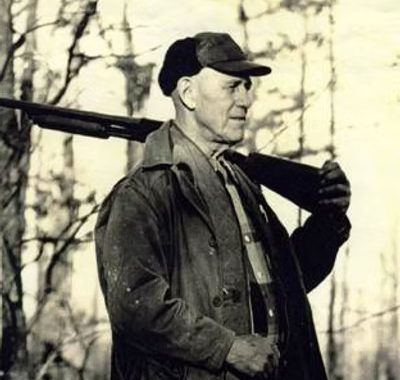Build it and they will come.
Wallace Claypool used this plan successfully with ducks a half-century before the phrase was a key component in a popular baseball movie.
Claypool’s Reservoir in east Arkansas launched the most reproduced wildlife photograph of all times in Arkansas, and it was the site of an early television milestone program. All along, from its construction in 1940 to today, the reservoir has been a proven and reliable hotspot for mallards and many other species when ducks come south for the winter.
So strong was the reservoir’s appeal to ducks that some waterfowlers and commercial duck operations shook fists in Wallace Claypool’s direction when his reservoir had ducks and theirs did not. “Claypool’s got a half-million ducks on his place, and we don’t have any.”
Claypool’s Reservoir covers 1,350 acres on the Wild Acres tract, 3,500 total acres a few miles east of Weiner in Poinsett County, that Claypool bought in 1941. He built the reservoir next to L’Anguille River for the express purpose of enticing ducks. The reservoir is shallow and timber filled. It has been a duck magnet from its inception in the style of the east Arkansas bottomland hardwood duck hunting made internationally famous over the years.
Wallace Claypool was born in 1886 and died in 1973 at the age of 87. He successfully managed a Memphis automobile dealership beginning in 1915 then partnered with Hugh Jetton in launching Bluff City Buick Co., in 1922. Times were booming in Memphis then, and Buicks were in demand. Claypool soon became a leader in a major Memphis bank and with the city’s Chamber of Commerce.
Claypool, personally strong on physical fitness, was a competitive amateur golfer then got into duck hunting in 1925. He had memberships in several east Arkansas duck clubs, including Wapanocca and Hatchie Coon, and developed the related skills as well as intense interest in habitat for wintering ducks.
In 1940, he won the World Duck Calling Championship at Stuttgart, and the next year was steered to land for sale by Fritz Rosenwald, who had declined Claypool’s offer to buy Rosenthal’s nearby land.
Claypool planted millet and other duck foods, but the hundreds of thousands of ducks that used the reservoir roamed widely in daytime to find food, disproving the allegation that “Claypool is hoarding the ducks.”
In 1956, Claypool’s Reservoir hit national television with a bang.
The most popular program of the time was Dave Garroway’s Wide Wide World. It had done a segment on catfishng in Arkansas, and Tom Mull, communications official with the Arkansas Game and Fish Commission, pitched the idea of a live duck hunt for Garroway’s program. It was accepted, and Mull assigned George Purvis, his assistant, to make arrangements. Purvis had taken an iconic black and white photo of hundreds of thousands of ducks in the water and in the air at Claypool’s Reservoir.
The challenges were immense for the program to air on Dec. 23. Access to the reservoir was by muddy roads. Two miles of power cables had to be strung for the operation of the large, bulky cameras along with six telephone lines.
But would the ducks be there?
Yes. And at 3:14 p.m. with Garroway’s program rolling, crews directed by Purvis fired a rocket, and an estimated 350,000 ducks sprang into the air with some cameras focused on two hunters, renowned shotgunner Herb Parsons and his 12-year-old son. So enthralled were the New York producers of the Garroway show that they kept the Arkansas images rolling and cut back other scheduled programs. Garroway closed out the live duck hunt by saying, “Now if you will brush the duck feathers off your sofa, we’ll go on with the rest of our program.”
Claypool had strict duck hunting concepts for his reservoir. It was hunted only in mornings and only three days a week – Wednesdays, Saturdays and Sundays.
He retired and sold Claypool’s Reservoir in 1966 to four Memphis friends, all enthusiastic duck hunters -Bayard Boyle, Snowden Boyle, Toof Brown and Norfleet Turner. But Claypool and wife Sally continued to live on Wild Acres until shortly before his death.
